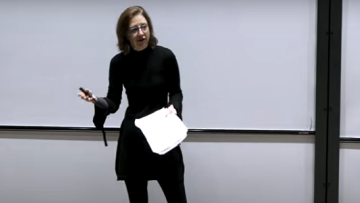Which of the 93 student lectures on our YouTube Channel is most watched? Perhaps the 'Introduction to Mathematics' or a spot of 'Linear Algebra'? Or possibly 'Probability'?
Well, they're all popular, but the most watched lecture on the channel is 'Introductory Calculus'. YouTubers (and the algorithm) love it.
So we're showing 4 lectures from its follow-up, 'Multivariable Calculus' starring Sarah Waters. It's a first year lecture taken in the second term of the year.


